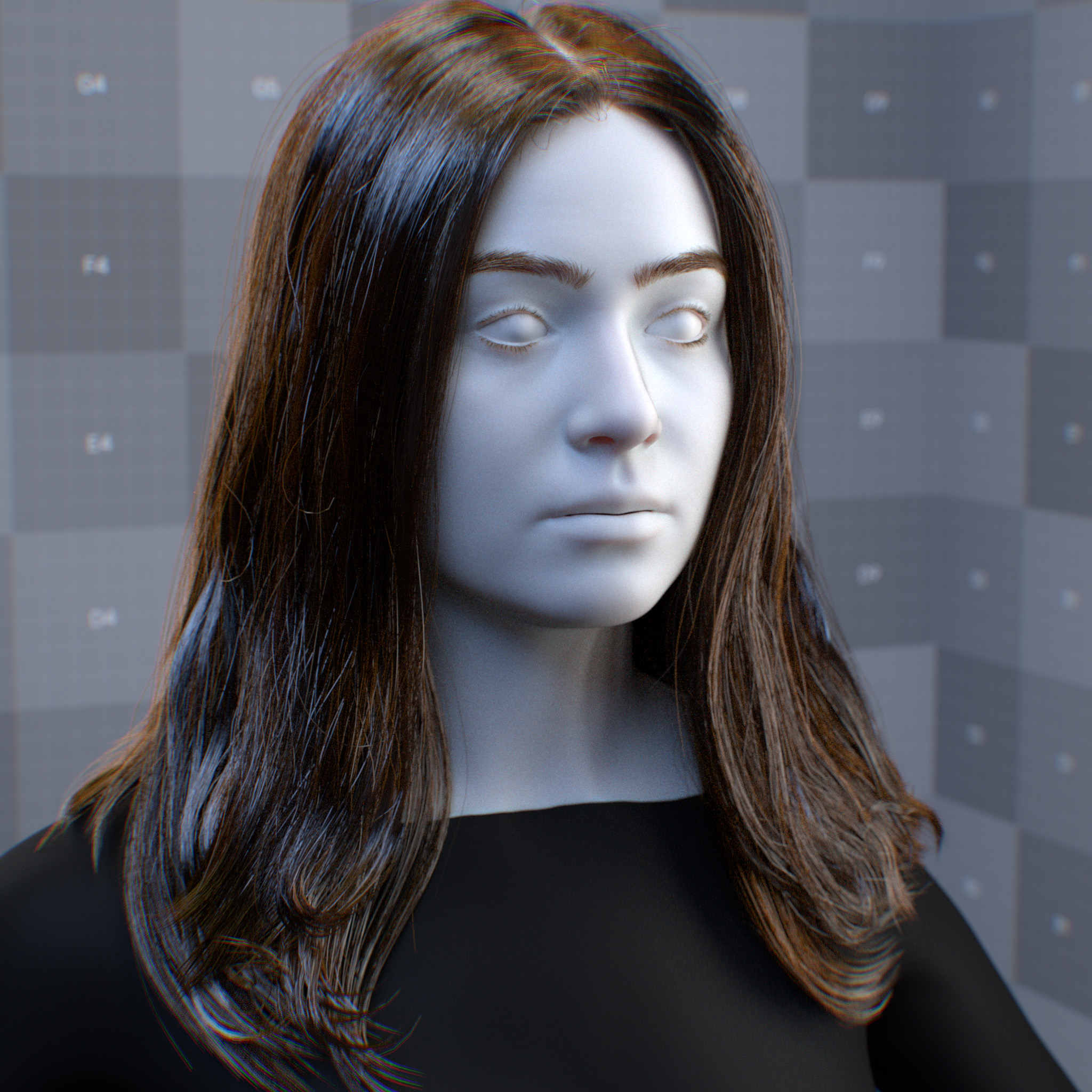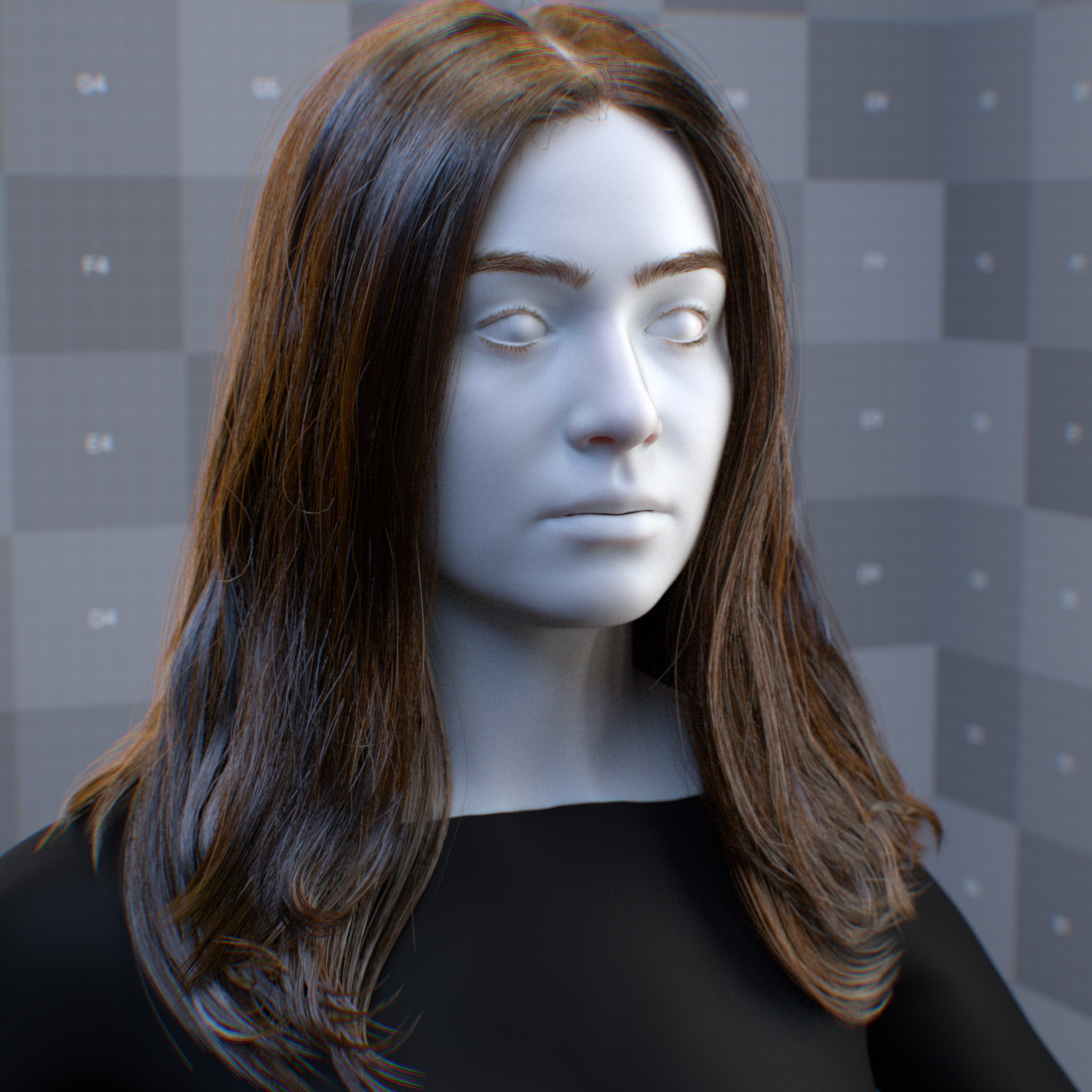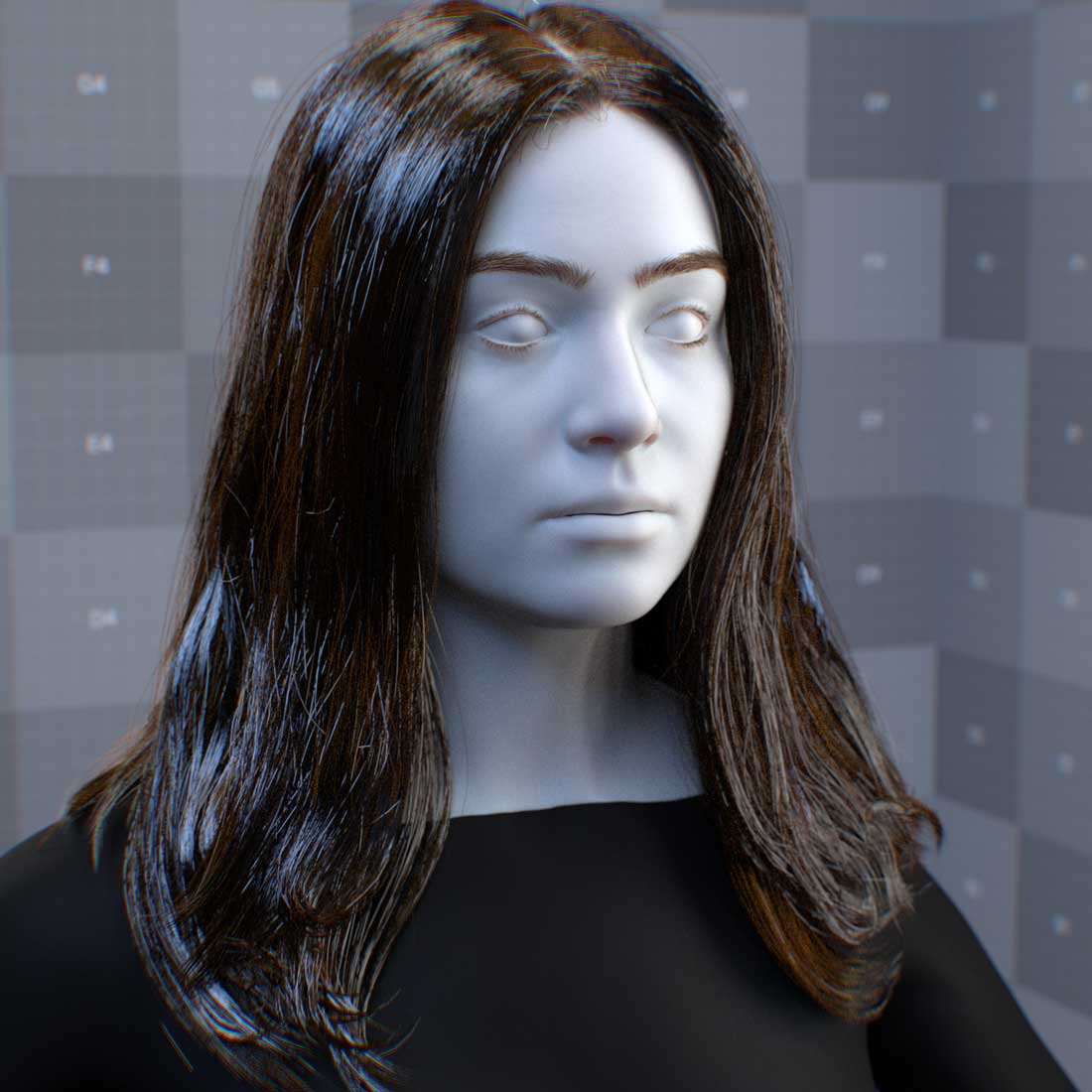Specular#
Hair specular creates characteristic highlights and shine through surface reflection (primary), internal reflection (secondary), and light transmission through strands. Each component controls distinct reflection behavior.
Parameters
Display Name |
Name |
Type |
Default |
|---|---|---|---|
specular_reflection_roughness |
float |
0.2 |
|
specular_reflection_anisotropic_roughness |
bool |
false |
|
specular_reflection_azimuthal_roughness |
float |
0.2 |
|
specular_reflection_ior_preset |
enum |
ior_custom |
|
specular_reflection_ior |
float |
1.55 |
|
specular_reflection_shift |
float |
3.0 |
This hair model classifies light paths based on the number of internal reflections. Light paths are named after their event type. The first three light paths are R, TT, and TRT, where R indicates a reflection and T a transmission event.
These primary light paths are modeled as separate lobes with a dedicated longitudinal and azimuthal roughness. In contrast, longer light paths are implicitly accounted for a fourth lobe without additional parameters.
While the fourth lobe needs no azimuthal roughness, the longitudinal roughness of the fourth lobe is set to longitudinal roughness of the “third lobe”.
Roughness
This parameter sets the longitudinal roughness of the reflection along the hair fiber. At 0.0, reflection becomes sharp and bright, while at 1.0, a deviation based on specular_reflection_shift in degrees, for a very rough reflection.

|

|

|

|
Anisotropic Roughness
This parameter enables the use of the azimuthal roughness parameter. When disabled, the roughness parameter controls both longitudinal and azimuthal roughness.
Azimuthal Roughness
This parameter sets the azimuthal roughness of the reflection in the hair fiber’s tangent direction when the anisotropic roughness parameter is enabled. At a lower value, the reflection looks sharp, while at a higher value, reflection wraps around the hair fiber, giving a smoother look.
One could consider azimuthal roughness as a phase function of the hair fiber’s volume, which changes the translucency and affects the multiple scattering albedo.

Anisotropic Roughness: Disabled# |

Anisotropic Roughness: Enabled# |

Anisotropic Roughness: Enabled# |

Anisotropic Roughness: Enabled# |
IOR Preset
This parameter presents a list of known IORs (index of refractions) for various materials, including hair and wet hair. One can use custom IOR by setting this parameter to ior_custom and a value for the specular reflection’s IOR parameter.
IOR
This parameter sets the index of refraction. Individual hair fibers are modeled as dielectric cylinders, with hair fiber reflecting off and transmitting into the fiber depending on the IOR.
At a lower IOR value, hair fibers exhibit strong forward scattering, while at a higher IOR value, stronger reflection.
Tip
The IOR for typical human hair is about 1.55. A lower value can give hair fibers a muted look, while a higher value gives a wet look.
Shift (degree)
This parameter sets the angle of the hair fiber’s scales. values above 0.0 shift the primary and the secondary specular reflections away from the hair fiber’s root, while values less than 0.0 shift the specular reflection toward the root.
Recommended values for human hair:
Hair Origin |
Scale angle (degrees) |
|---|---|
Piedmont |
2.8 ± 0.2 |
Light brown European |
2.9 ± 0.3 |
Dark brown European |
3.0 ± 0.2 |
Indian |
3.7 ± 0.3 |
Japanese |
3.6 ± 0.3 |
Chinese |
3.6 ± 0.4 |
African-American |
2.3 ± 0.4 |

|

|

|

|

